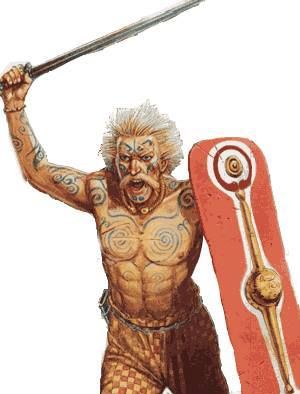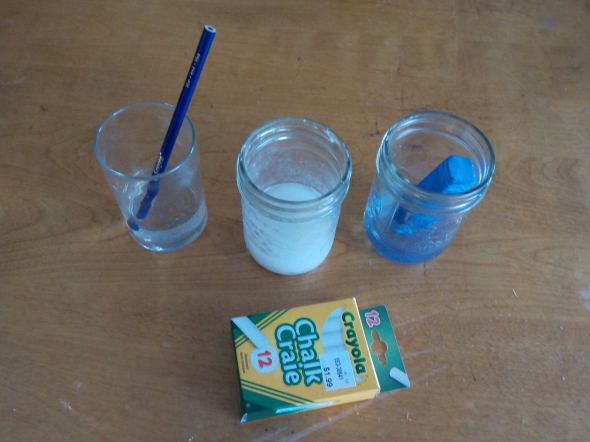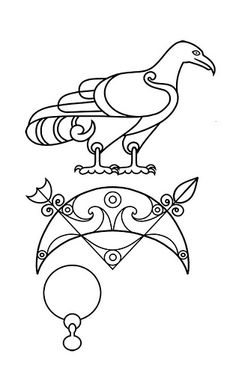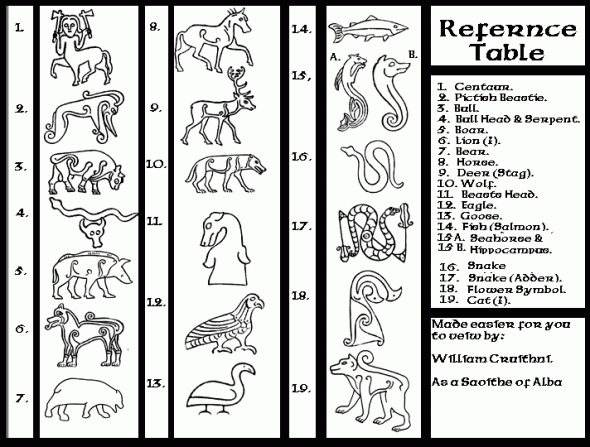Going Pictish – Substitutes for Woad & Lime Wash + Pictish Images To Use
7Jun 27, 2016 by Rua Lupa
Here in Ealdormere
We have our largest event coming up – Trillium War, which this year is themed “Highland Games”. As someone in the SCA (Society for Creative Anachronism – A historical recreation group) that is working on recreating a Pictish Persona, I decided to do the most I can to embody the theme in my costuming for the event
 Pictish Warrior – Image by Wayne Reynolds (from the Book, ‘Pictish Warrior AD 297-841’ by Paul Wagner)
Pictish Warrior – Image by Wayne Reynolds (from the Book, ‘Pictish Warrior AD 297-841’ by Paul Wagner)

Original Source Unknown

Image of “Ancient British Warriors” by Warlord Games
Sadly I currently don’t have trews – plaid pants/trousers, but I’ve got a few things together that I decided would be great to share here so others can try it too.
Paul Wagner & Wayne Reynold’s book “Pictish Warrior, AD 297-841” covers what is known about Pictish Tattoos (pages 25-27):



Diodorus Siculus (A Greek Historian that wrote several books between 60 and 30 B.C. / 9941 – 9971 H.E.) writes in Bibliotheca Historica Book V, page 171, (in translation) that Gauls “often wash their hair in a water boiled with lime, and turn it backward from the forehead to the crown of the head, and thence to their very necks, that their faces may be more fully seen, so that they look like satyrs and hobgoblins. By this sort of management of themselves, their hair is as hard as a horse’s mane.”
The insular Brittonic peoples (which include the Picts) sharing the Celtic Culture with Gauls means that they could have done this too. So to mimic this without the risk of caustic effects of a lime wash, I’ve made a water chalk mix to try with my hair. And (because time isn’t in my favor to order and try actual woad in time for the up coming event) I’ve tested out blue chalk and coloring pencil – tips soaked in water, as a substitute for woad.



What I found is that I much prefer the results from coloring pencils, but the chalk is much easier to work with. Ideally you’d have a few coloring pencils to rotate through so you don’t have to wait for the recently used one to be soft enough again – and leaving it too long runs the risk of breaking the tip.
When sharing this information, others had shared what they used as alternatives for lime wash and woad. One was “a mixture of eggwhite and flour to simulate the limming effect. Much easier to wash out. It can make a bit of a mess though.“; The other suggested ““clown blue”. It comes in both pencil and compact form. I’ve found it to be an ideal substitution for woad.”
As for what to have for images, beyond Wagner’s and Reynold’s book, I’ve gathered as much relevant imagery as I could find that are straight forward enough to draw effectively on the body. The following are motifs primarily sourced from Pictish Stones.
See Wikipedia “Pictish Stones” and look up “Pictish” in the National Museum of Scotland to see where these images originate from.




 Original Source of Ravens is unknown – appears to be a modern image done in Pictish style.
Original Source of Ravens is unknown – appears to be a modern image done in Pictish style.

Original Source of Rabbit is unknown – appears to be a modern image done in Pictish style
Triskelions can be found in many ancient Celtic books and on Standing Stones from the time of the Picts (AD 297-900)
Gospel of Mark opening page – Book of Kells c. 800 AD:

 An illustration of how The Maiden Stone in Aberdeenshire may have looked with colour | Scotland’s carved Pictish stones re-imagined in colour | 23 June 2017 | By Steven McKenzie | BBC Scotland Highlands and Islands reporter
An illustration of how The Maiden Stone in Aberdeenshire may have looked with colour | Scotland’s carved Pictish stones re-imagined in colour | 23 June 2017 | By Steven McKenzie | BBC Scotland Highlands and Islands reporter
Here are some easy to copy depictions,

Five Fold, Spiral, Taranis Wheel, Triskellions, and a Double Spiral
 Triskelions
Triskelions
A great reference for historical Triskelions is, “Celtic Art, The Methods of Construction” by George Bain, page 61 and 63.



[Photos of “Pictish Warrior, AD 297-841”, “Celtic Art, The Methods of Construction”, Gospel of Mark opening page – Book of Kells, and “An illustration of how The Maiden Stone in Aberdeenshire may have looked with colour” were added 4th of March, 12024 H.E.]


Some of those images are *really* good art and i would love to use them for various projects. However, I don’t want to steal another artist’s work. Are they available for public use / copyright free?
LikeLike
I honestly am unable to find the original sources for the two Pict Warrior images, and the ravens. But all other images are essentially past their copyright expiration for well over a thousand years.
LikeLike
LikeLike
AH, So that is where it came from! Thanks 😀
LikeLike
[…] is where I tested the Faux woad and faux lime wash hair with my Pictish persona. I didn’t have Trews (plaid trousers) for my persona so I opted for […]
LikeLike
What is this symbol on the right of flower symbol (Taken from Asterix and the Picts)?
https://ibb.co/SdY6MPp
LikeLike
Good question. I do not know, but looks like it is in the La Tène style.
LikeLiked by 1 person